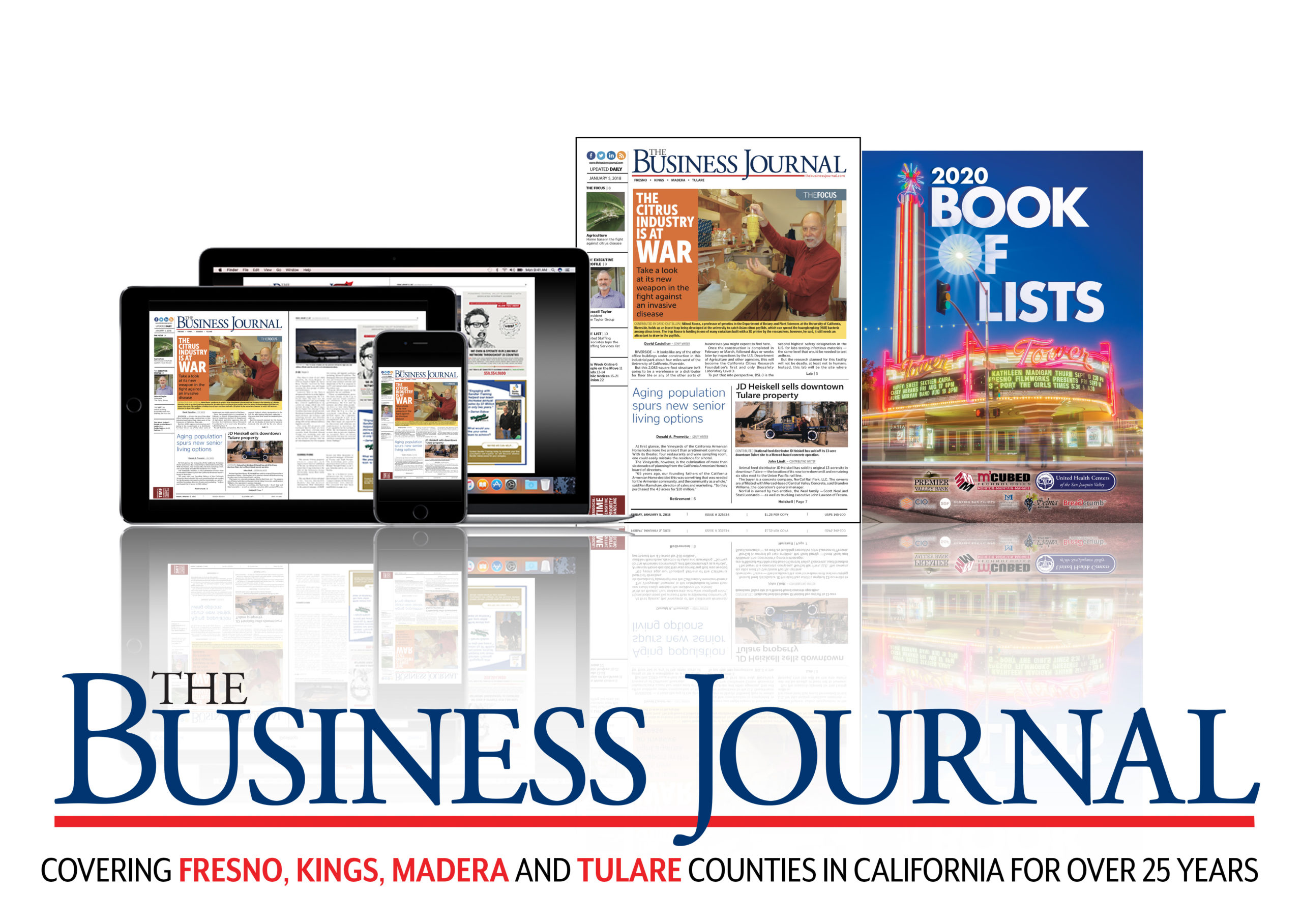
Workers dig out trenches to install new sewage lines under the tarmac at Fresno-Yosemite International Airport as part of a more than $30 million project to fully replace Taxiway C on the north side.
Written by
The Central Valley’s population is growing at a faster rate than the average across California and the nation.
That, combined with higher employment rates in recent years, have increased activity at Fresno-Yosemite International Airport, and the expectations of higher-paying jobs arriving when Amazon, Ulta, Faraday Future and other big-name employers launch operations here or expand likely will further get more people flying in the coming years.
Airport officials are planning for that future by developing a Master Plan Update detailing what changes may be needed over the next 20 years that could include the construction of a parking garage and expanding the terminal to allow more international flight arrivals.
In the short term, that plan includes increasing ground-level parking and renovating two passenger areas to accommodate the arrivals and departures of larger planes with larger numbers of passengers, said Kevin Meikle, Fresno’s director of aviation.
“FAA requires a master plan, and they like to see it done about every 10 years,” though that’s not a hard-and-fast rule, which is why Fresno Yosemite International’s last Master Plan update was completed in 2006, and the latest update still is in the works, he explained.
That plan is vital, because the federal agency generally pays 90 percent of all construction renovations and expansions — along with technical upgrades — to the airport’s tarmac and flight operations, and the projects listed on an approved master plan are used to determine which projects to fund and by how much every year.
The airports, themselves usually pay the remaining 10 percent for projects on the tarmac, while they generally pay the full costs for capital projects in the terminal, parking areas and other spaces away from the tarmac.
Though the City of Fresno owns the airport, no city money goes into it. Instead, fees collected from airlines, rental car companies, restaurants, shops and other tenants of the airport are used to cover its costs.
Before the Master Plan can be done, an airport first has to submit to the Federal Aviation Administration a forecast of the amount of use it likely will experience over the next 20 years.
Meikle said that since 2009, passenger numbers here have grown by 30 percent, hitting more than 1.5 million last year.
Passenger numbers over just the first three months of this year have exceeded the same period in 2017 by about 10 percent.
Airlines are responding to this and the Valley’s improving economy by increasing flights and the sizes of some planes going to some destinations, along with adding new destinations, Meikle said. Among the changes:
– Late last year United Airlines added “mainline” service to San Francisco, meaning the run is being handled by a Boeing 737, which carries about 180 passengers, instead of a 50 to 70-seat jet.
– United also increased daily flights to Los Angeles from an average of 2.4 a day to four and will begin offering direct flights to Chicago — a major hub — starting June 7.
– American Airlines has added three to five daily flights to Los Angeles.
– Starting May 22, Frontier Airlines will start new service to Denver with full-sized Airbus A320 aircraft.
– Volaris Airlines started a new service, offering direct flights to Morelia, Mexico.
“They’re doing really well,” Meikle said of the Morelia flights, noting that the 180-seat A320s the airline is flying usually have 120-150 seats filled, even during the current off season before the summer rush.
As for the capital projects currently in the work, the largest is the complete replacement of Taxiway C, with the first phase that started in March projected to cost $13 million and the second phase costing $10 million, with the FAA footing 90 percent of those costs, using tax money charged on the purchase of aircraft fuel at all U.S. airports.
Last month, airport officials got approval from the Fresno City Council to go forward with a $1.9 million renovation of gates 6 and 8, which will include gutting the area to make more room for passengers so larger planes can drop off and pick up passengers there. In addition, plans are to install a walkway to planes at Gate 8 so passengers will not have to walk outside and climb up rolling stairs to board as they do now.
The changes are being driven by Aero Mexico, United, American and Volaris shifting to the use of larger aircraft.
Meikle said he hopes the renovations will be done by late this year, before the holidays.
If there’s one area where the airport experiences the biggest space pinch — “It’s not the airfield, it’s not the gates, although the gates can get crowded with the aircraft. It’s not really baggage claim or the ticket counters” — it’s parking, particularly during peak travel times in the summer and holiday seasons, he said.
To alleviate that problem, an employee parking lot and one for passengers with cell phones to wait for arriving passengers to walk out of baggage claim just east of the terminal will be turned into long-term parking lots, adding 700 spaces to the 2,000 already there.
New lots farther away from the terminal will be built for employees and cell phone waiting.
Airport officials plan to submit a preliminary design for the parking changes to the City Council later this month, and Meikle offered a rough cost estimate of $3-$4 million.
“This is the last piece of land that we can legitimately develop as surface parking” without having to launch a shuttle system to get people and from the terminal, but that would cost a lot, he said, adding that the final plan proposal could be submitted to the FAA before the end of the month.
“Our Master Plan is going to show that at some point in the future — and it could be within a five-year window — we’re going to need to build a parking garage out here in the lot,” and the new surface-level parking is planned with that in mind, as the extra 700 spaces created would more than make up for the 500 or so spaces that would be out of use during the parking garage construction, Meikle explained.
He said the goal is to get the new surface-level parking done by May of next year.
Speaking of extra space, Meikle said another needed project down the line would be to expand the airport’s international terminal beyond its current 12,000 square feet. With such limited space available and only one gate, arriving international flights need to be spaced about 90 minutes apart in order to disembark passengers from each flight and have them clear customs ahead of the next flight.
A larger area and a couple of more gates would allow flights to come in and leave closer together, Meikle said, adding there is room on the east side of the terminal for such an expansion.
Fresno Yosemite also is home to the Air National Guard’s 144th Fighter Wing and the 1106th Theater Aviation Sustainment Group, an aircraft maintenance unit.
Meikle said officials with the National Guard Bureau have indicated space is tight for the Guard operations on the southeast corner of the airport, and a
Guard Master Plan is in development that may suggest a move.
One possibility is shutting down the Airways Golf Course off the north side of the airport — built in the mid 1940s by the Army Air Corps, along with the original airfield as a training base before deeding both over to the city of Fresno in 1948.
The airport now operates the municipal golf course and can use it as space to expand air operations.
“It really depends on Congress and the National Guard Bureau,” but it could be 10 to 20 years before such a move might occur, if federal officials decide they can’t work in the space the Guard operations currently occupy.
As for whether the airport will need further expansion, Meikle said that with the grown the commercial and private plane use at the airport, more hangars and ramp space will be needed, “and the airport has the space available for private entities to come in and develop facilities.” One of those could be Amazon, which is building a fulfillment center in Fresno and has a fleet of jets it operates, he added.
As for the airfield, itself, he said, “The Master Plan is going to say, ‘Yeah, the airfield system can accommodate whatever growth we have over the next 20 years without expanding runways, lengths or anything like that.’”








